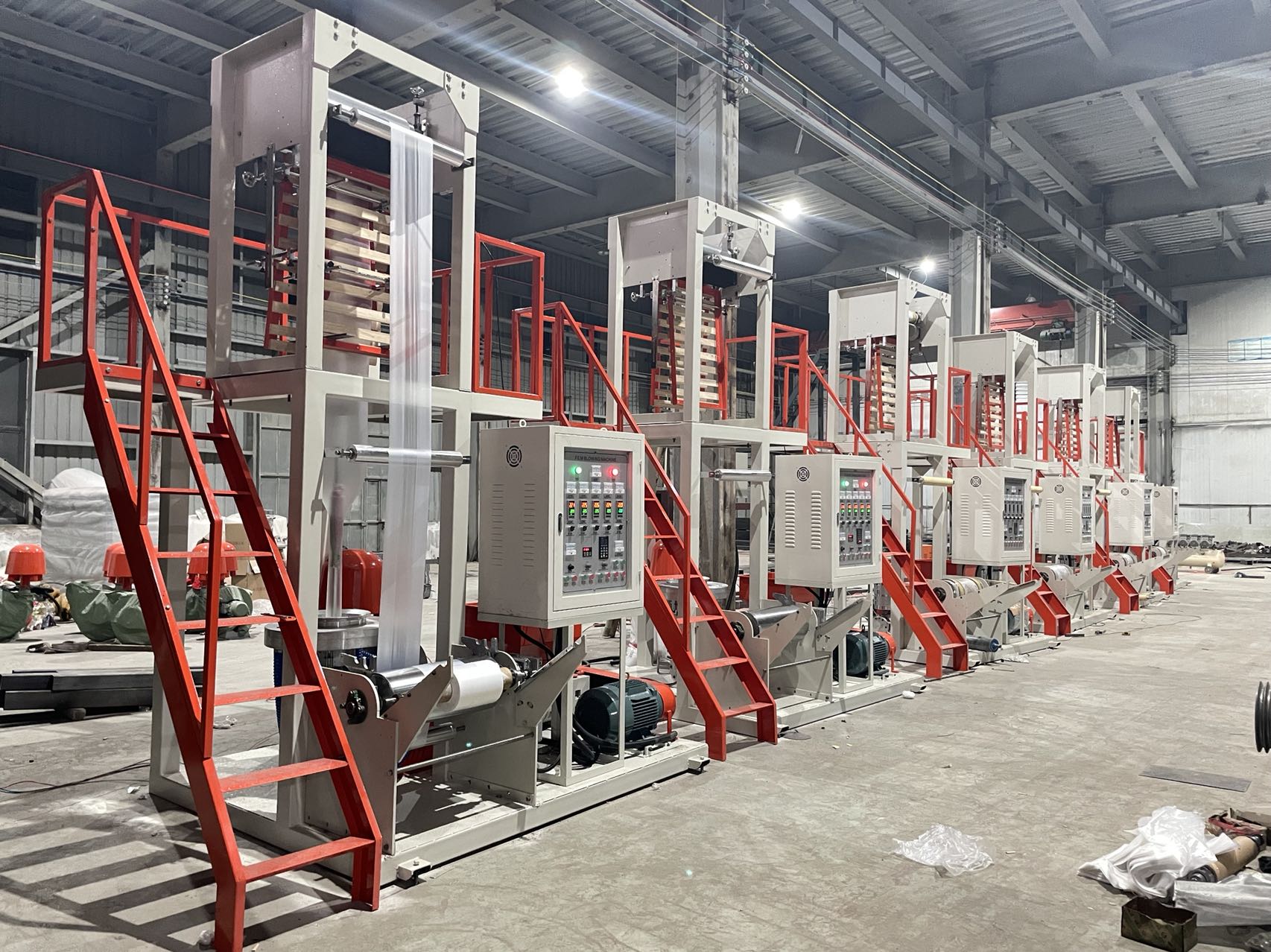Film blowing machine working principle
The working principle of a blown film machine involves several key steps and components that work together to produce high-quality plastic film. This process, known as blown film extrusion, is widely used in the packaging industry for the production of various types of films, including polyethylene (PE), polypropylene (PP), and polyvinyl chloride (PVC).
Firstly, the raw plastic material is fed into the extruder, which is a chamber equipped with a screw. The screw rotates and pushes the plastic material forward, while simultaneously heating it. The heat causes the plastic pellets or granules to melt and become a molten mass.
Once the plastic has melted, it is forced through a circular die at the bottom of the extruder. The die is specially designed to shape the molten plastic into a continuous tube. The size and shape of the die determine the dimensions and characteristics of the film being produced.
As the molten plastic exits the die, it enters a cooling zone. In this zone, air is blown into the center of the tube to inflate it. The air pressure inside the tube causes the plastic to stretch and thin out, forming a bubble-like structure. The size of the bubble is controlled by adjusting the air pressure and the speed at which the film is pulled upwards.
To maintain the desired width of the film, the machine utilizes a system of collapsing frames. These frames help guide and shape the film as it rises from the die. The frames can be adjusted to achieve the desired dimensions and ensure uniformity in the film’s width.
After the film has been formed, it enters a cooling system. This can involve passing the film through a set of cooling rollers or using an air cooling system. The purpose of the cooling process is to solidify the molten plastic and stabilize the film’s shape and properties.

Once the film is cooled, it passes through various optional processes such as printing, laminating, or slitting. These additional processes enhance the film’s functionality and appearance, making it suitable for specific applications.
Finally, the film can be wound onto a roll using a winding system. This allows for easy handling, storage, and transportation of the produced film.
Overall, the blown film machine utilizes a combination of heating, shaping, inflating, cooling, and processing techniques to produce high-quality plastic film. Its versatility and efficiency make it an essential tool in the packaging industry, enabling the production of films that meet the diverse needs of consumers and businesses alike.












